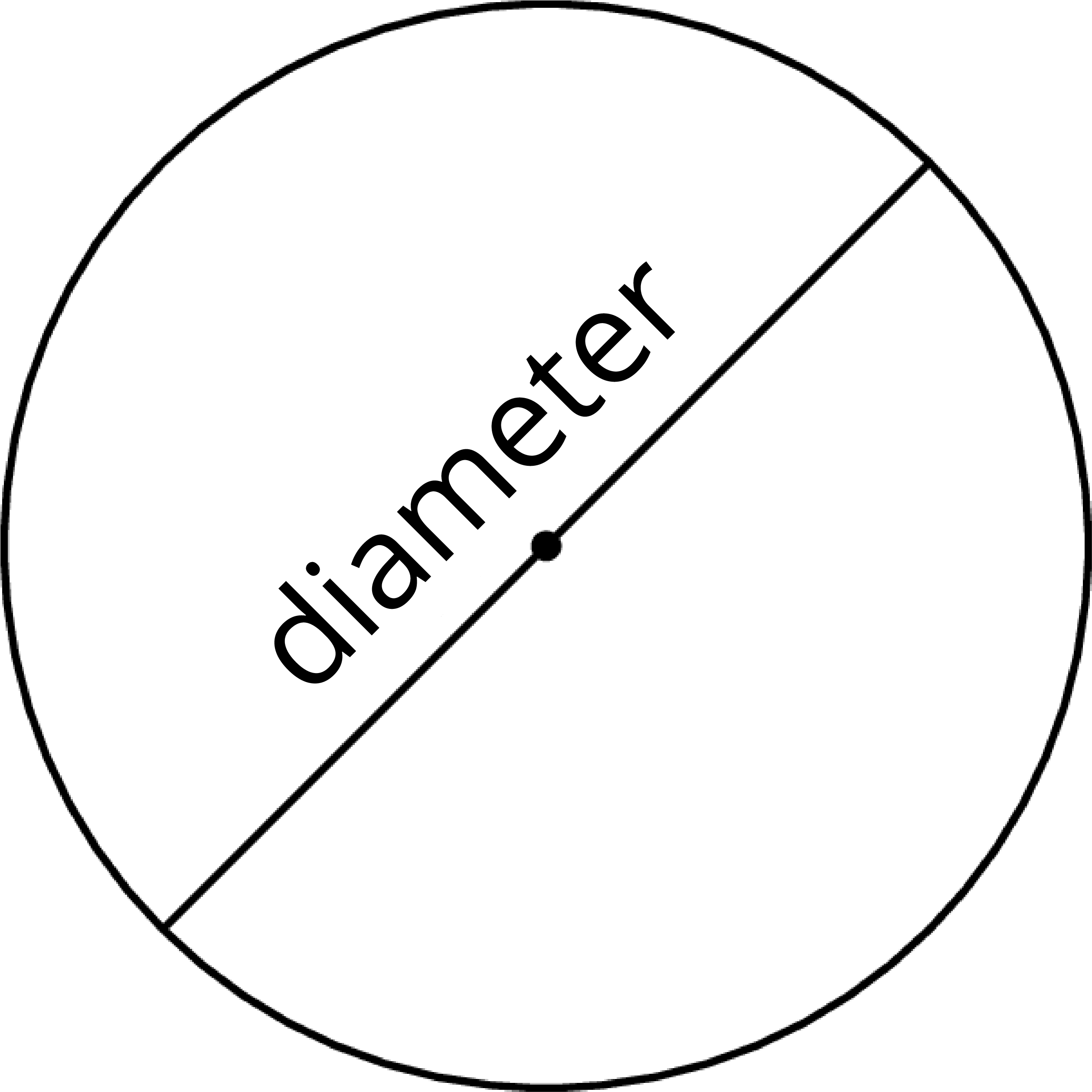Lesson 2
Exploring Circles
Lesson Narrative
This is the first lesson on circles in a unit that develops and applies methods to find the circumference and area of a circle. In this lesson, students move from the informal idea of a circle as “a round figure” to the more formal definition that a circle is the set of points that are equally distant from the center, enclosing a circular region.
Students discover characteristics of a circle by examining examples and non-examples. They gain experience drawing circles with a compass. (For classrooms that do not have access to compasses, a digital version of the activity is provided.) They develop the idea that the size of a circle can be measured by its diameter, radius, circumference, or the enclosed area, depending on the context. We will often use phrases like “What is the diameter of the circle?” to mean “What is the length of a diameter of the circle?”
Learning Goals
Teacher Facing
- Compare (orally) different ways to measure a circle, and generalize the relationship between radius and diameter.
- Comprehend the terms “diameter,” “center,” “radius,” and “circumference” in reference to parts of a circle.
- Describe (orally and in writing) the defining characteristics of a circle.
Student Facing
Let’s explore circles.
Required Materials
Required Preparation
You will need the Sorting Round Objects blackline master for this lesson. Prepare 1 copy per 2--3 students, and cut them up ahead of time. These slips can be reused from one class to the next. If possible, copy each complete set on a different color of paper, so that a stray slip can quickly be put back.
Learning Targets
Student Facing
- I can describe the characteristics that make a shape a circle.
- I can identify the diameter, center, radius, and circumference of a circle.
Glossary Entries
-
circle
A circle is made out of all the points that are the same distance from a given point.
For example, every point on this circle is 5 cm away from point \(A\), which is the center of the circle.
-
circumference
The circumference of a circle is the distance around the circle. If you imagine the circle as a piece of string, it is the length of the string. If the circle has radius \(r\) then the circumference is \(2\pi r\).
The circumference of a circle of radius 3 is \(2 \boldcdot \pi \boldcdot 3\), which is \(6\pi\), or about 18.85.
-
diameter
A diameter is a line segment that goes from one edge of a circle to the other and passes through the center. A diameter can go in any direction. Every diameter of the circle is the same length. We also use the word diameter to mean the length of this segment.

-
radius
A radius is a line segment that goes from the center to the edge of a circle. A radius can go in any direction. Every radius of the circle is the same length. We also use the word radius to mean the length of this segment.
For example, \(r\) is the radius of this circle with center \(O\).
Print Formatted Materials
For access, consult one of our IM Certified Partners.
Additional Resources
| Google Slides | For access, consult one of our IM Certified Partners. |
|
| PowerPoint Slides | For access, consult one of our IM Certified Partners. |

